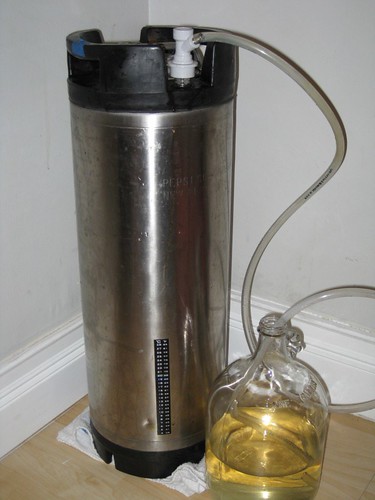Shaika-Dzari
Well-Known Member
- Joined
- Jul 22, 2020
- Messages
- 74
- Reaction score
- 53
Hi everyone!
I'm currently fermenting my batch in a plastic bucket.
It's cheap and I know food grade plastic is technically fine but for me using stainless sound like a far better idea.
My local brew shop sells SS brewtech which look fine but, damn, these are not cheap!
Browsing their web site, I saw a 5 gallons keg 100$ cheaper than the brewtech and thought "maybe I could use it as fermenter".
I usually do 2.5 gallon batch, so a 5 gallons keg would have plenty of headpsace.
After searching here, I found it is indeed possible and people seem to do it successfully.
But what I did not find is how to setup the keg to ferment ? Do I need to buy additional piece of equipment (valve, hose, etc) to use it as fermenter ?
Thanks!
I'm currently fermenting my batch in a plastic bucket.
It's cheap and I know food grade plastic is technically fine but for me using stainless sound like a far better idea.
My local brew shop sells SS brewtech which look fine but, damn, these are not cheap!
Browsing their web site, I saw a 5 gallons keg 100$ cheaper than the brewtech and thought "maybe I could use it as fermenter".
I usually do 2.5 gallon batch, so a 5 gallons keg would have plenty of headpsace.
After searching here, I found it is indeed possible and people seem to do it successfully.
But what I did not find is how to setup the keg to ferment ? Do I need to buy additional piece of equipment (valve, hose, etc) to use it as fermenter ?
Thanks!






![Craft A Brew - Safale S-04 Dry Yeast - Fermentis - English Ale Dry Yeast - For English and American Ales and Hard Apple Ciders - Ingredients for Home Brewing - Beer Making Supplies - [1 Pack]](https://m.media-amazon.com/images/I/41fVGNh6JfL._SL500_.jpg)



















































